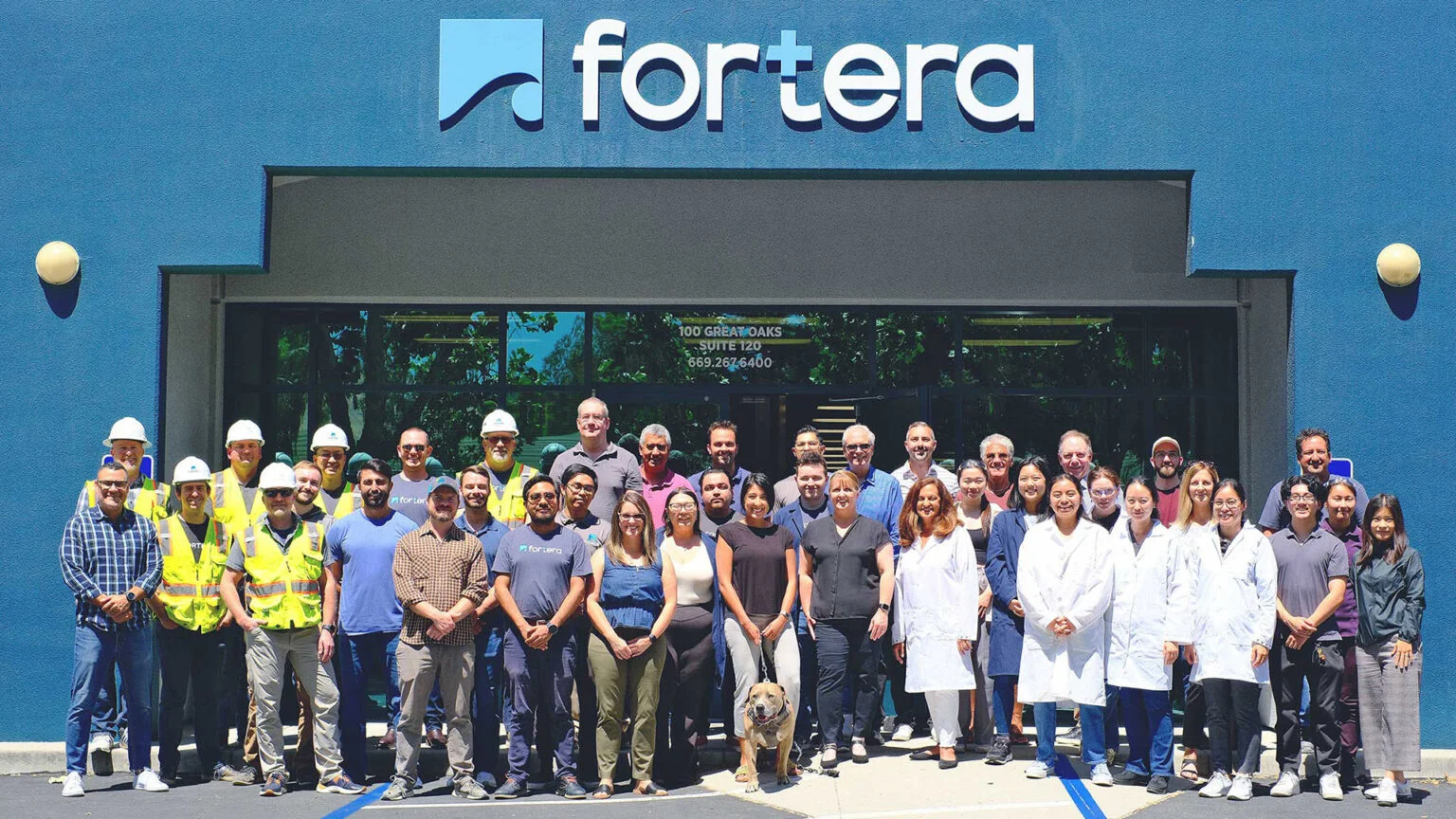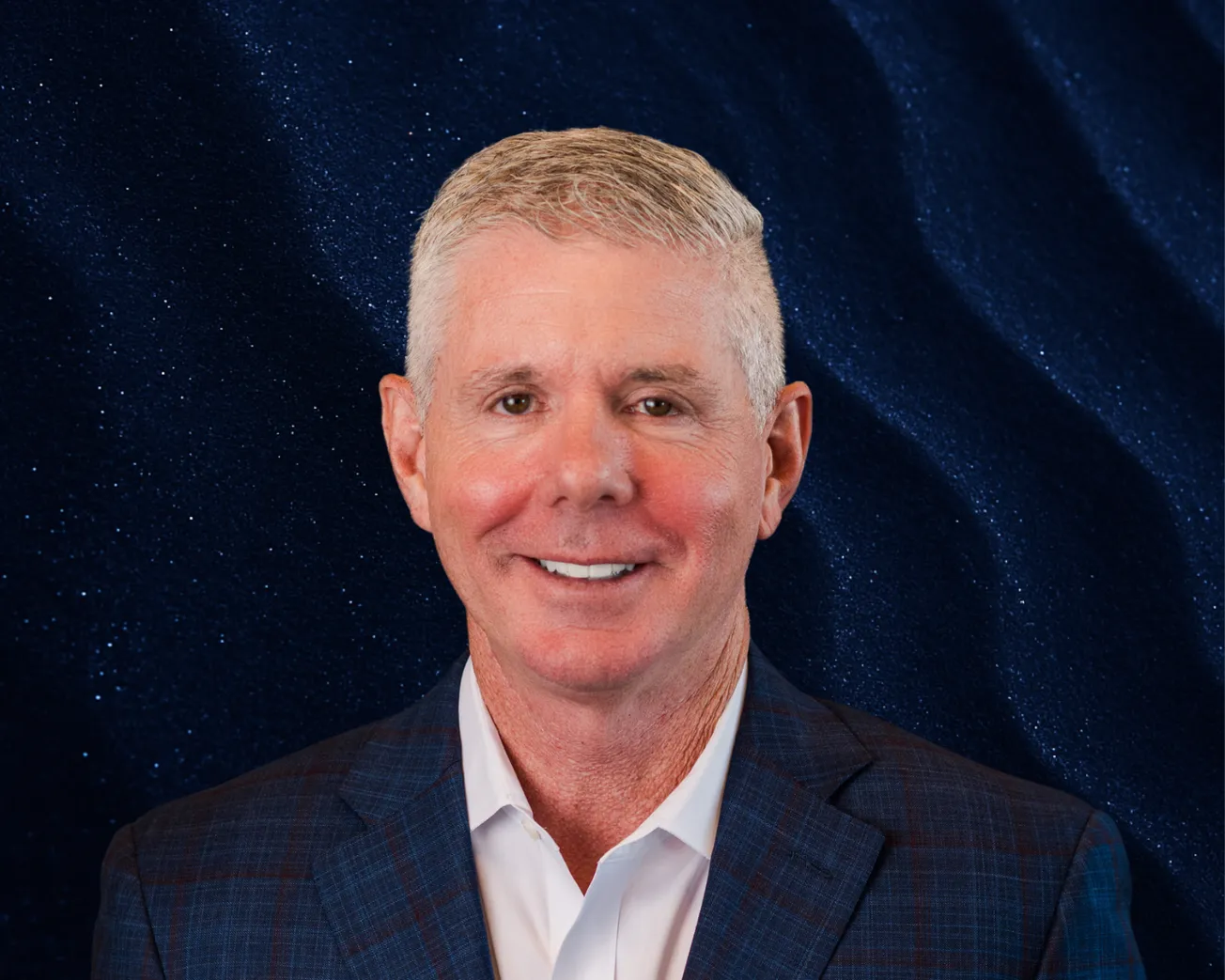Table of Contents
Dr. Ryan Gilliam, CEO of Fortera Corporation, sat down with Onyx for a feature-length interview.
Could you start by telling us a bit about your background and how you came to lead Fortera?
Yeah, I feel like it's a long story as to how I got to where I am, but my entire career has been in climate tech. I did an undergrad and my PhD in materials engineering. Honestly, I was planning to become an academic. I'd even signed up for a postdoc.
Then, I got a call from a company in California, Calera, which was one of the first CO₂-to-building-products companies. That’s actually where Fortera has its roots. I always describe Fortera as a five-year-old company that’s been 18 years in the making!
They flew me out for an interview and said, “Hey, why not join for a year? If you don't like it, go back to the academic route.” So, I joined and, frankly, I’ve never looked back.
What pulled you away from academia?
Both academia and industry are completely necessary for bringing science, and tech, forward. But there's a little bit of a difference between theoretical fundamentals and practicalities at scale. After joining the industrial side, I learned that the ability to scale up technology and turn it into something was much more where my passion lay.
That first company, Calera, was a green cement company, during Climate Tech 1.0. It was incredibly successful, technically speaking. We created a new type of cement that was, by weight, 44% captured CO₂, with real applications; a company which held over a hundred patents and with 100,000 hours of R&D to its name. However, it wasn’t grounded in realistic economics. Everyone thought that people would pay for CO₂, and that, simply by the virtue of being green, it would drive adoption.
But that didn’t pan out?
No, I ended up taking over as CEO and shut down that cement business in 2014. Since then, I’ve founded multiple other companies in the climate tech space - in the chemicals and energy sectors. What those experiences really did was help to affirm a thesis: in order to make climate tech work, it’s all about economics and scale!
Fortera is really the outcome of those experiences. We figured out how to take a proven technology forward, in a way that’s economically viable and will be adopted within the current cement ecosystem.
How exactly does your material differ from traditional cement?
In traditional cement, 80% of the feedstock is limestone, which is calcium carbonate. The issue is that calcium carbonate is, by weight, 44% solid CO₂. To make Portland cement, when you heat it up in a kiln, that CO₂ comes off as emissions. That's why cement is so CO₂ intensive.
Cement and concrete combined constitute about 8% of the world’s CO₂ emissions - and almost all of it is tied back to the cement’s production.
What we do at Fortera is to take our cues from nature, where the exact opposite happens. If you look at how shells or coral reefs form, they absorb CO₂ and make a reactive form of limestone.
We’ve figured out how to take that reactive form - which normally exists in nature for a fraction of a second - and stabilized it. You can put it in a cement bag, or cement silo, and it’s not going to react until you add water.
So, the way I explain it is that we take limestone and turn it back into limestone! In reality, we’re going from an inert rock to a form of limestone that’s actually reactive in cementitious systems.
That’s what gives you the CO₂ benefit?
Exactly! Instead of losing 44% of that weight as CO₂ emissions, we’re actually putting that CO₂ into the product itself, so you don’t lose all those emissions.
What about the cost? Is your material more expensive than traditional cement?
From a financial perspective, I’ll break it down.
Like I said earlier, our thesis is: to make green tech work, it’s all about economics. The only way that you're going to have a meaningful impact on the world is if you get to large economies of scale, meaning many millions of tons a year.
You might get small pockets of people willing to pay a premium for green cement. However, if you want mass adoption, you’ve got to be at the same price point as traditional cement.
So, everything in our technology is designed around that. We partner with existing cement companies - we go on-site, use their limestone, their kilns, their logistics, their sales - and that’s how we keep our costs down.
While I hate the term “green for free,” to some extent, that’s really the goal.
You’re not trying to build everything yourself?
That’s right, we’re not trying to rebuild the whole cement supply chain. By plugging into what our partners already do well, we can produce our material and still retain enough of a margin that it’s profitable for them - even while selling at traditional cement pricing.
The harder part is that cement works because of the scale on which it’s sold. The average plant does a million tons a year or more! If you're running a smaller-scale plant, your economics aren’t as good, until you hit that scale. But when we get to those larger plants, we know that we’re cost competitive.

What does your business model look like - licensing, joint ventures, or something else?
It’s evolving. There’s no one-size-fits-all, right now. We’ve signed MOUs for build-and-operate, where we own production; for licensing; and for joint development.
It depends on the appetite for risk of our partners. Cement companies know how to run plants, but our tech is different. So, early on, different models work for different folks.
As we scale, building more plants and getting more product onto the market, as that risk profile comes down, I think we’ll trend more and more towards licensing.
Have recent supply chain issues or energy costs affected your rollout plans?
Yeah, especially as a U.S.-based company, we've had to look at things like: what equipment are we buying overseas? What are the impacts of tariffs? What happens to capital costs if steel prices spike?
We’ve had to be smart on the front end, and I think that the situation will continue evolving.
From an energy perspective, what’s unique about us is that we’re not reliant on green energy to be green. We still use the same hydrocarbons in the kiln, and we still get to 70 to 80% lower CO₂ per ton! If we use green energy, we can go all the way to zero CO₂!
Nonetheless, our partners can stick with their existing energy and still get a huge green benefit.
When you pitch Fortera - is it about compliance, or is there a broader value proposition?
The climate angle definitely helps us to open the door. Every major company now has sustainability mandates. But it all comes down to economics and scale.
We’re a bolt-on, so our partners can continue to use their feedstocks, infrastructure, logistics and sales. We allow them to expand production capacity in a capital-efficient way - and still make margin on it!
That’s really why we've gotten the traction that we have. We're not reliant on green premiums to make the model work.
What does the next five to ten years look like?
We've signed multiple MOUs. You’ll see, from a recent press release, we’re partnering with Graymont, for a global rollout of plants.
Right now, we’re concentrating on executing large-scale commercial plants. These are two- to three-year endeavors just to get through the design and build phases. We already have our first site in the works. These are 400,000+ ton plants, so they involve big volumes.
As those plants come online and we move down the cost curve, we’ll be able to roll out more broadly. That’s the plan for the next five years.
Performance-wise, how does your product compare to Portland cement?
There are two types of regulations in cement: compositional- and performance-based. To make adoption easy, we put our material into traditional blends, and it falls under the existing regulations - 15 to 30% depending on the region.
We’ve got more than 15 years of real-world applications, with third-party testing. That has shown that there are no detrimental effects over time.
The holy grail for us is 100% replacement. Our material can do it. We hit the same strength as Portland cement, and we get there much faster. Traditional cement takes 28 days to cure; we hit full strength in two!
We qualify under performance-based regulations. However, not everyone uses those yet, so it’s a challenge. But, over time, we think that’ll change.
What advice would you give to a future executive trying to break into this industry?
Having a great tech idea is just the first step. Be hyper focused on whether you are solving something that your customers want? Are your economics viable? Is this something they can adopt at scale?
Concentrate on bringing in people, early on, who understand scale. A lot of things work in the lab. I’ve done over a hundred patents on different technologies, and I’ve seen plenty fall apart when you try to scale.
Be hyper focused on economics and scale and bring in people who’ve done it before.






